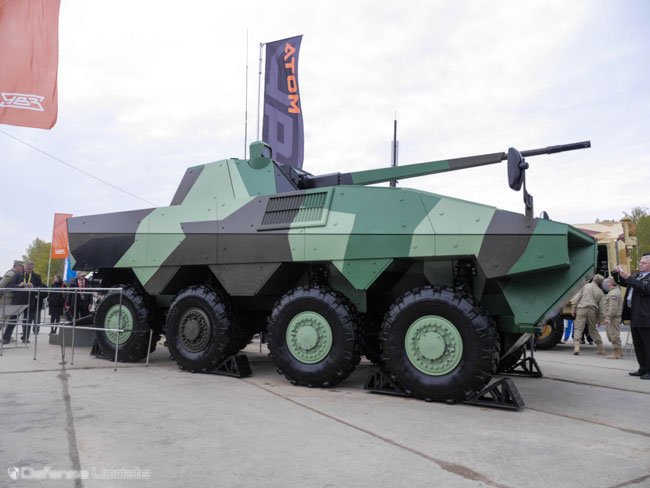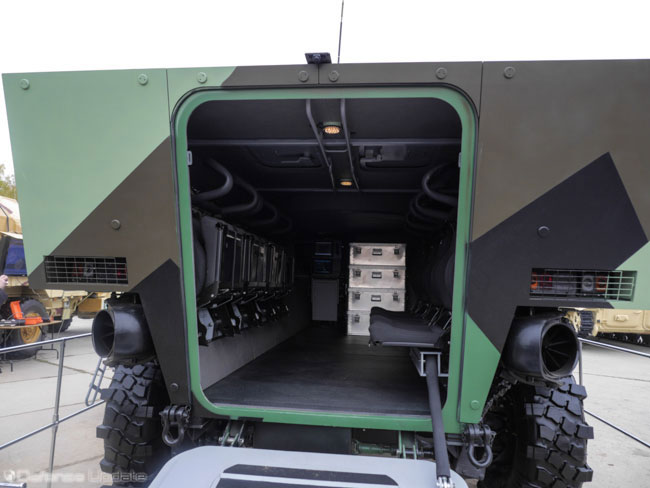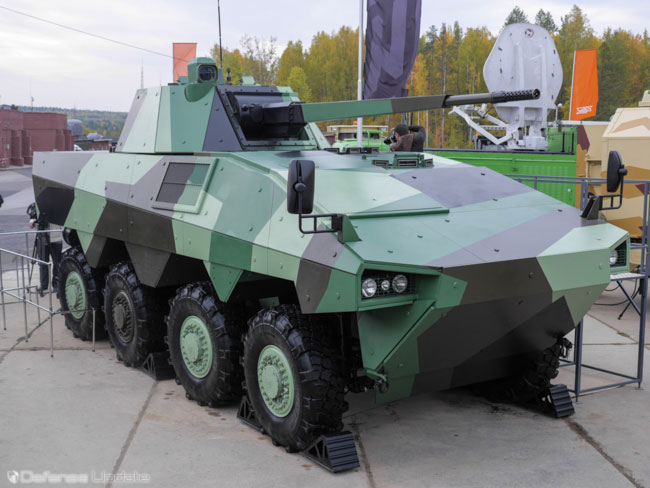
Russian Tracked vehicle manufacturer UralVagonzavod and Renault Trucks Defense of France have unveiled a collaboration program the two companies are pursuing since February 2013, to develop a heavy armored wheeled vehicle, responding to domestic and international requirements.
The ATOM heavy Infantry Fighting Vehicle (IFV) unveiled here at Nizhny Tagil on Wednesday was produced on the chassis similar to the one Renault is producing for the Nexter VBCI, manufacturer for the French Army.
The ATOM represent UralVagonzavod’s first entry into the wheeled armored vehicle market, reflecting the company’s strategy in strengthening its traditional tracked vehicle production base with wheeled vehicle platforms, for which demand is stable (unlike tracked vehicles). As a heavy vehicle platform, ATOM will be able to adapt to a number of applications, all based on a common chassis. These include troop carriers, command vehicles, combat electronic vehicle, combat engineering and recovery, and fire support platforms, mounting various weapon systems, from the 57mm cannon shown here to the 120mm gun-mortar.
Allowing UralVagonzavod to proceed with this prototype and show it publicly at the exhibition could hint on the Ministry of Defense’ interest in encouraging more competition in an area that was traditionally highly regulated.
UralVagonzavod’s move is see as a direct challenge to the traditional Russian Wheeled AFV manufacturer AMZ, which is currently geared to produce hundreds of BTR-82 per year. However, the future of this line unclear, as the BTR-82 is in the last variant of the BTR-60 platform that has lasted almost 60 years in service. AMZ is expected to release a future APC platform, either 6×6 or 8×8, in the upcoming years. However, at RAE-2013 the company have shown the Wolk (Wolf), a future tactical utility vehicle that will succeed the TIGR.
Unlike the French VBCI, the ATOM shown here is equipped with an unmanned gun turret mounting a 57mm cannon of a Russian production. The cannon is delivering a firing rate of 120-140 rounds per minute, wit effective Irving range of up to six kilometers. The turret stores 80-100 rounds.
The turret is not penetrating the hull, leaving the entire 10.7 cubic meter cabin space for carrying eight troops (a typical squad) and a crew of three, plus equipment. The cabin has four roof hatches and a rear ramp for access and disembarkation. ATOM will be able to travel on road at a speed of 100km/h and have an operational un refueled range of 750km,


According to a joint statement released by the two companies, the cooperation between RTD and Ural Vagon Zavod was launched in February 2013 at the last edition of the IDEX exhibit in the United Arab Emirates. “This partnership has resulted in this initial project, which aims to replace the BTR-80s in service in the Russian Army.” The statement said. In terms of mobility, certain versions will be amphibious and air-transportable by Il-76.



















